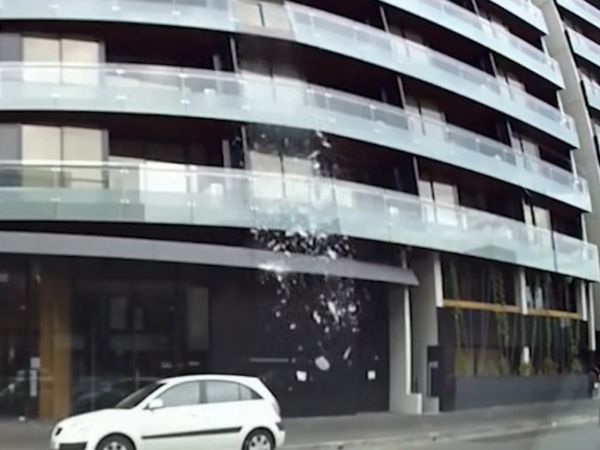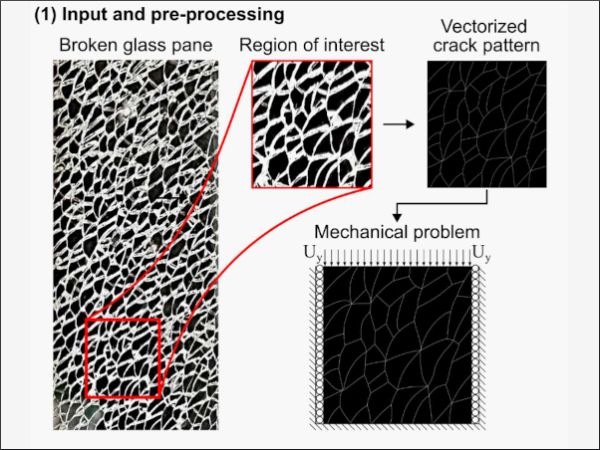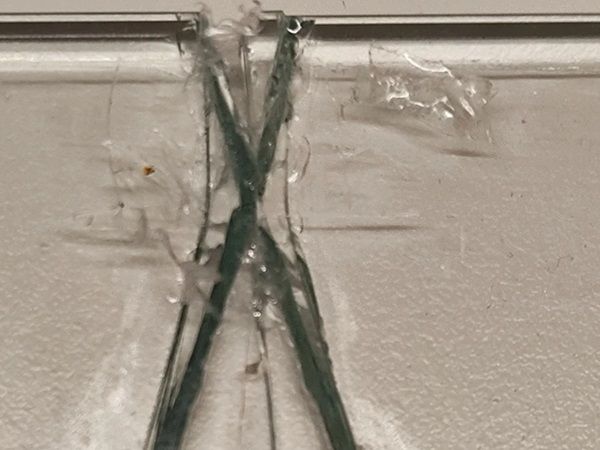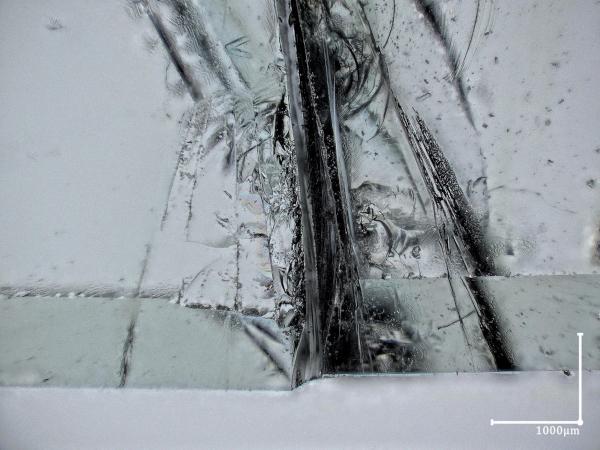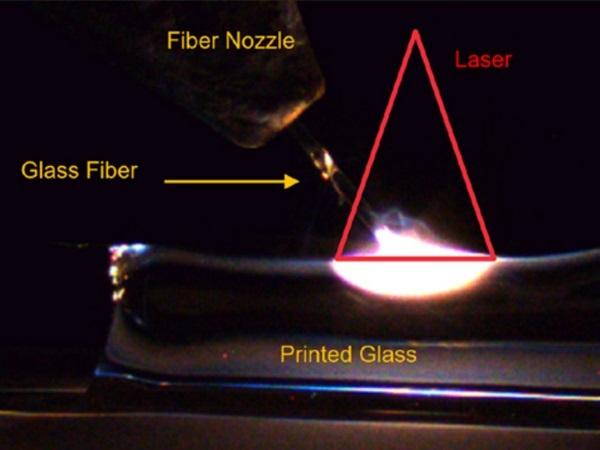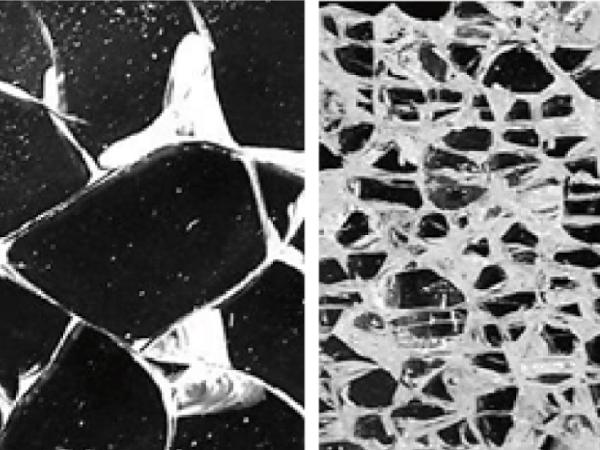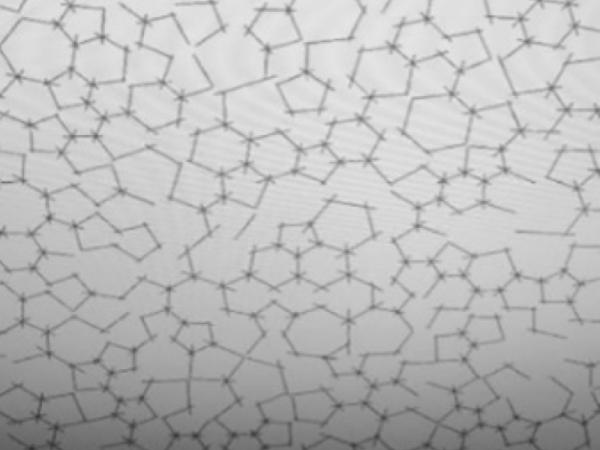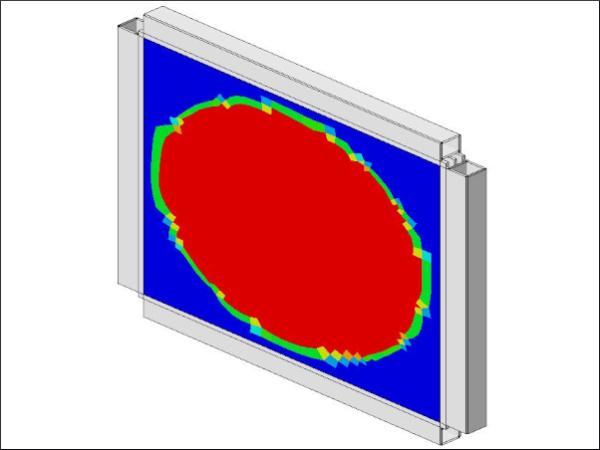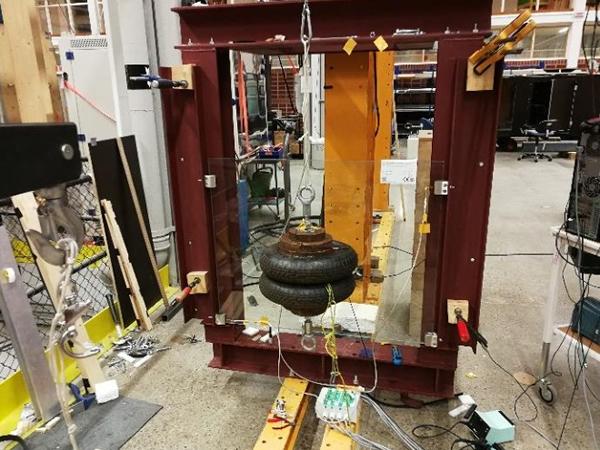Others also read
| Scratches on aged glass can weaken its structural integrity, posing safety risks in architecture; this study evaluates the mechanical performance of scratched glass through experimental testing and numerical simulation.
| This paper looks at design practices for glass balustrades, particularly where the glass is the structural element providing the primary restraint for the occupant.
| The objective of the present work is the development and testing of a robust numerical model that can naturally introduce the generated crack pattern into virtual specimens and manage the interaction among many fragments.
| This paper investigates the challenges and potentials of phase-field modelling in simulating glass fracture.
| The four point bending test is one of the most commonly used and standardised tests to determine the mechanical properties of materials.
| The aim of this work is to investigate how the load level affects the crack propagation and to generate an experimental database for L-shaped soda-lime glass specimens with curved crack paths.
| The paper will show the critical aspect of using the right lighting and lenses and the settings needed to obtain high quality images of complex 3D damage.
| This contribution introduces concepts for prestressing laminated glass beams with Fe-SMA tendons adhesively or mechanically connected to the glass beams.
| Proposal for a simplified engineering approach.
| The present study investigates the loadbearing capacity of additive manufactured components composed of glass.
| An equivalent temperature difference model for engineering glass design
| Investigations of different positions of the sphere and the satellite and their effect on stress distribution are studied. Both, experimental observations and computational FEM simulations are compared.
| Spontaneous breakage of fully tempered glass in facades is under control today when the heat soak process according to EN 14179-1 (2006/2016) is rigorously carried out.
| The thermal rupture behavior of the frame-supported float glass subjected to thermal loading is carefully examined using a self-built experimental system.
| In the present paper, attention is focused on the experimental and Finite Element (FE) numerical analysis of in-service LG modular units acting as pedestrian elements that are affected by partial glass fracture and ordinary walking conditions.
| The tightness of the gap in insulating glass units is a necessary factor to maintain good thermal insulation of transparent glazing.
| Glass units are in demand in structural applications, however, the strength is challenging to predict.
| The impact of building glass breakage on personnel injury was considered in this model.
| This paper presents some of major outcomes of Finite Element (FE) numerical methods and simulations that have been explored in the framework of the GLASS-SHARD research project for glass windows and facades under explosion or soft-body impact.
| The intention of this paper is to address this gap with the aid of photoelasticity as an indirect measuring method in a coordinated way with numerical simulation based on finite element analysis.
| The two case studies illustrate how the engineering of glass can fluctuate with design intent in unusual scenarios – when we cannot rely solely on conventional codes and standards to guide the analysis.
| Do you still spend precious time doing the meticulous task of manually counting glass cullets for a glass fragmentation test? Or maybe your modern counting tool is not exactly the gold standard? If so, we have some good news for you!
| Post breakage strength of glass is still an unknown area as analytical models for this are inconclusive so far and thus destructive testing is the only reliable solution.
| The present paper presents an ongoing research project considering the failure of glass at high strain-rates. It provides a brief review of existing studies showing a strength increase with loading rates relevant for e.g. blast loads.
| The paper presents an overview of the work completed within the on-going research project “Structural safety of glass components” carried out at the Silesian University of Technology, Lund University and RISE Research Institutes of Sweden.


